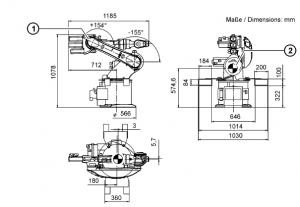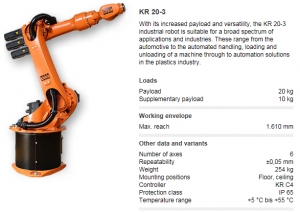History of Lab:
Led by Christoph Klemmt, Mara Marcu, and Ming Tang, School of Architecture and Interior Design (SAID), DAAP received the 2016 Provost’s Technology Innovation Award and built the Architectural Robotic Lab (AR Lab). Architectural robotics has become one of the most important fields of architectural research in recent years as they allow the physical construction of complex computational geometries.
Service:
Now the AR Lab serves the entire College of DAAP and is operated by a team of full-time staff. The robot is housed at the DAAP Ceramic lab. The AR Lab focuses on the exploration of new ways of fabrication and material distribution through robots and improves the teaching and research of digital fabrication in DAAP.
First, ARL supports faculty and student to test various materials including clay, cement, silicon, and composite material, which are difficult to handle by the typical 3D printers. Second, the robotic fabrication will allow DAAP faculty to teach computer programming and use scripts to interact with the robot.


About Robotic Fabrication
Digital fabrication has been of great interest to architects and fabricators; and advancements in techniques, methods, and tools have greatly shaped the manufacturing process of the built environment. Robotic aided digital fabrication has been the interest of automated construction processes since the start of the early 90’s. Computer simulations and mathematical models allow researchers to precisely control the robot and the properties of the final product. Building on the principles of digital craft, robotic craft seeks to build on recent advancements by examining the ways in which robotic arms have come to be seen as transcending their traditional role as performers of the monotonous tasks of mass manufacturing pipelines (Gramazio, 2008) and instead be viewed as part of the toolset available for the production of crafted and unique work. Robotic arms act in the same manner as a human arm, where seven degrees of freedom (DOF) are used to rotate, twist, grab, avoid obstacles, and improve accuracy (Cokcan, 2010). Today, the globalization of technology facilitates new advancements in digital realization (Carlow, 2009) and opens new possibilities for robots to engage in the creation of high craft artefacts and manufacturing of products. Through the Architectural Robotic Lab ( ARL), relationships between craft, art, design, engineering, computer science, and computational robots are examined in order to expand the notion of craft and manufacturing in both digital and analogue processes.
The mission of AR Lab
The AR Lab focuses on the exploration of new ways of fabrication and material distribution through robots and improves the teaching and research of digital fabrication in the school of Architecture and Interior Design. First, ARL supports faculty and student to test various materials including clay, cement, silicon, and composite material, which are difficult to handle by the typical 3D printers. Second, the robotic fabrication will allow DAAP faculty to teach computer programming and use scripts to interact with the robot.
Location of AR Lab
AR Lab is supported by the College of DAAP. The Lab serves the entire college and is operated by a team of full-time staff. The robot is housed at the DAAP Ceramic Lab.
